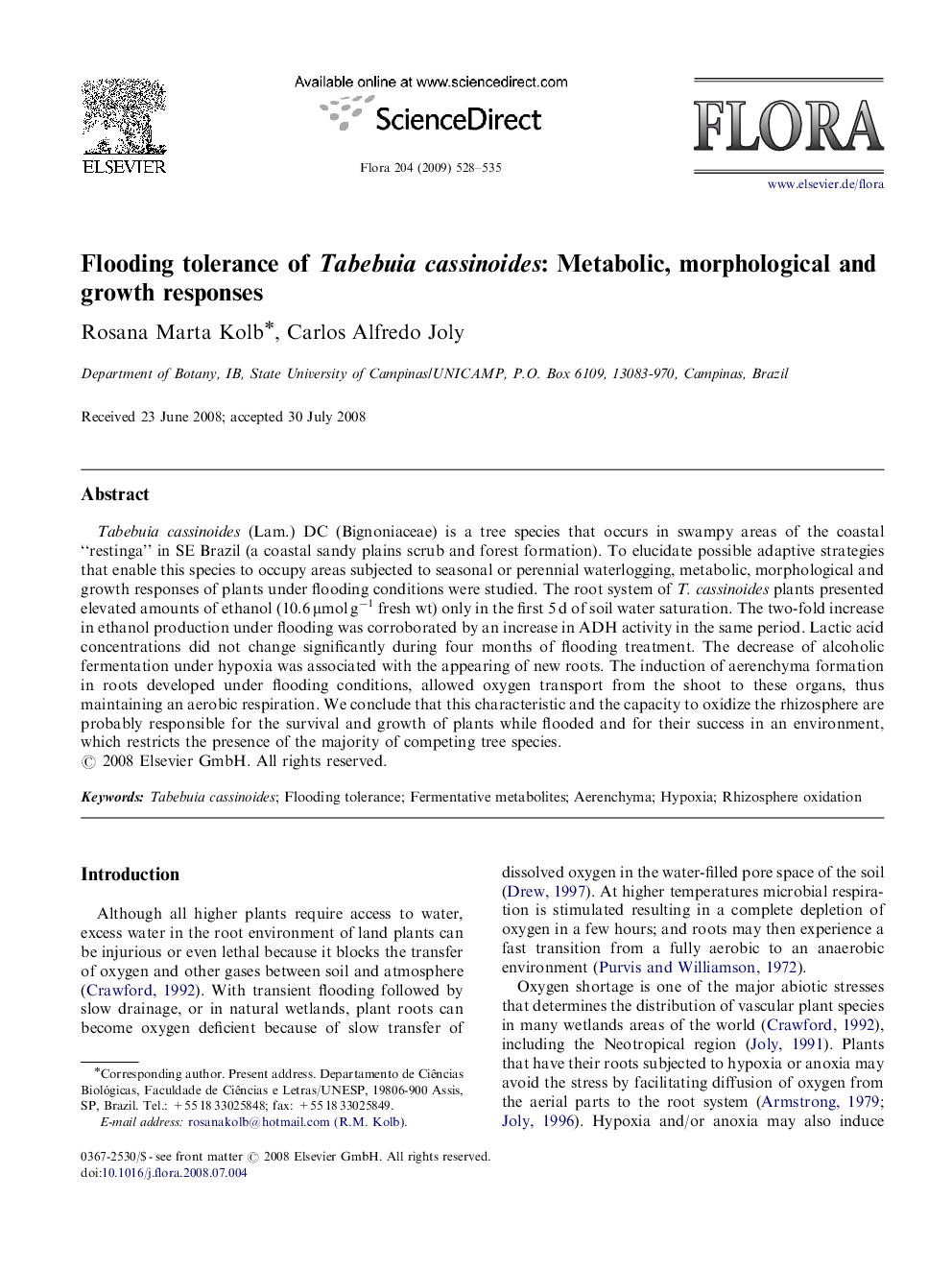| Article ID | Journal | Published Year | Pages | File Type |
|---|---|---|---|---|
| 2180029 | Flora - Morphology, Distribution, Functional Ecology of Plants | 2009 | 8 Pages |
Tabebuia cassinoides (Lam.) DC (Bignoniaceae) is a tree species that occurs in swampy areas of the coastal “restinga” in SE Brazil (a coastal sandy plains scrub and forest formation). To elucidate possible adaptive strategies that enable this species to occupy areas subjected to seasonal or perennial waterlogging, metabolic, morphological and growth responses of plants under flooding conditions were studied. The root system of T. cassinoides plants presented elevated amounts of ethanol (10.6 μmol g−1 fresh wt) only in the first 5 d of soil water saturation. The two-fold increase in ethanol production under flooding was corroborated by an increase in ADH activity in the same period. Lactic acid concentrations did not change significantly during four months of flooding treatment. The decrease of alcoholic fermentation under hypoxia was associated with the appearing of new roots. The induction of aerenchyma formation in roots developed under flooding conditions, allowed oxygen transport from the shoot to these organs, thus maintaining an aerobic respiration. We conclude that this characteristic and the capacity to oxidize the rhizosphere are probably responsible for the survival and growth of plants while flooded and for their success in an environment, which restricts the presence of the majority of competing tree species.
